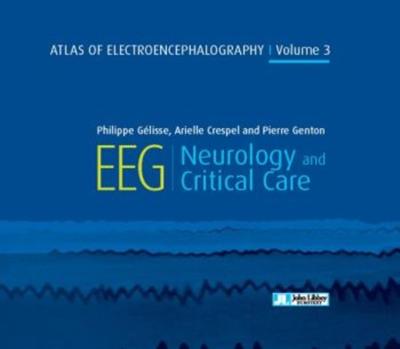Nous utilisons des cookies pour améliorer votre expérience. Pour nous conformer à la nouvelle directive sur la vie privée, nous devons demander votre consentement à l’utilisation de ces cookies. En savoir plus.
Atlas of electroencephalography - Volume 3
EAN : 9782742015795
Paru le : 4 juil. 2019
-
 Livraison gratuite
Livraison gratuite
en France sans minimum
de commande -
 Manquants maintenus
Manquants maintenus
en commande
automatiquement -
 Un interlocuteur
Un interlocuteur
unique pour toutes
vos commandes -
 Toutes les licences
Toutes les licences
numériques du marché
au tarif éditeur -
 Assistance téléphonique
Assistance téléphonique
personalisée sur le
numérique -
 Service client
Service client
Du Lundi au vendredi
de 9h à 18h
- EAN13 : 9782742015795
- Réf. éditeur : 044204
- Editeur : John Libbey
- Date Parution : 4 juil. 2019
- Disponibilite : Disponible
- Barème de remise : NS
- Nombre de pages : 346
- Format : H:305 mm L:250 mm E:22 mm
- Poids : 1.556kg
-
Résumé :
The third volume of the series of Atlases deals with the use and usefulness of electroencephalography (EEG) in neurology.
While EEG is universally recognized as a first-order investigation method in epilepsy (see Volume 2), and as an important contributor in sleep medicine, practical neurology has tended to neglect the value of this classical and established neurophysiological tool. A rich, extensively commented and analyzed collection of EEG plates is presented here.
The reader will be compelled to remember that EEG is the easiest way to assess parameters like state of vigilance, risk of seizure activity, type and degree of functional impairment, in a very clinical and practical setting. The authors cover many aspects of neurological practices where the EEG may help in diagnosis and treatment: metabolic and other encephalopathies, infectious and inflammatory conditions, vascular disorders. It is particularly useful -and difficult- to distinguish between epileptic phenomena and EEG changes associated with metabolic abnormalities: a careful assessment of the EEG is of paramount practical importance here. Migraine is not always simple and there are many overlaps with other types of neurological diseases: the EEG may play a major part in helping the clinician in doubtful cases. Similarly, the diagnosis of dementia does certainly not rest on the EEG but many particular aspects concerning diagnostic overlaps or copathologies are aptly explored by the EEG. Lastly, even the neurosurgeon may need the EEG to monitor trauma, tumor, bleeding...
This Atlas will provide both examples and guidelines for the optimal use of the EEG in neurology.












